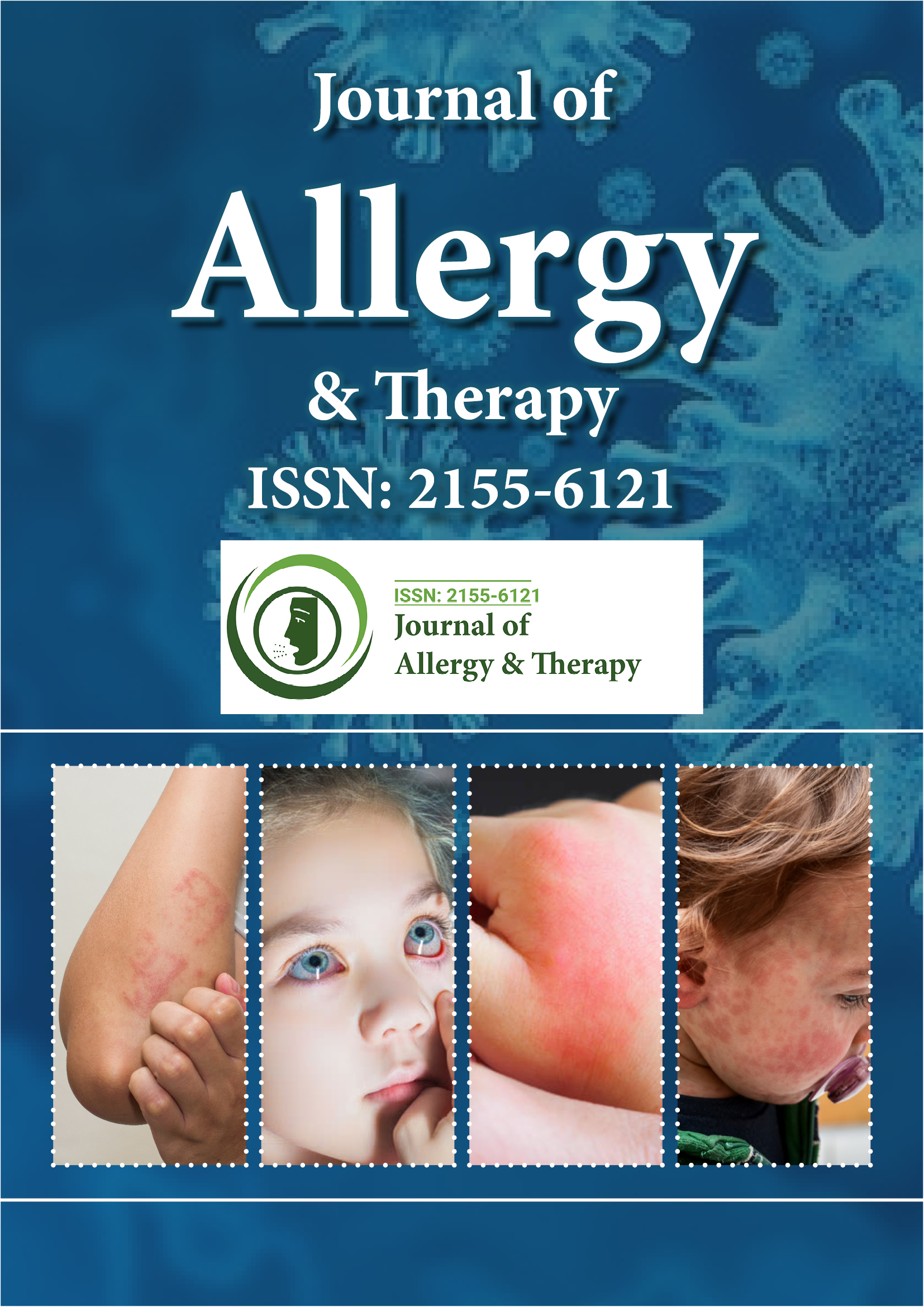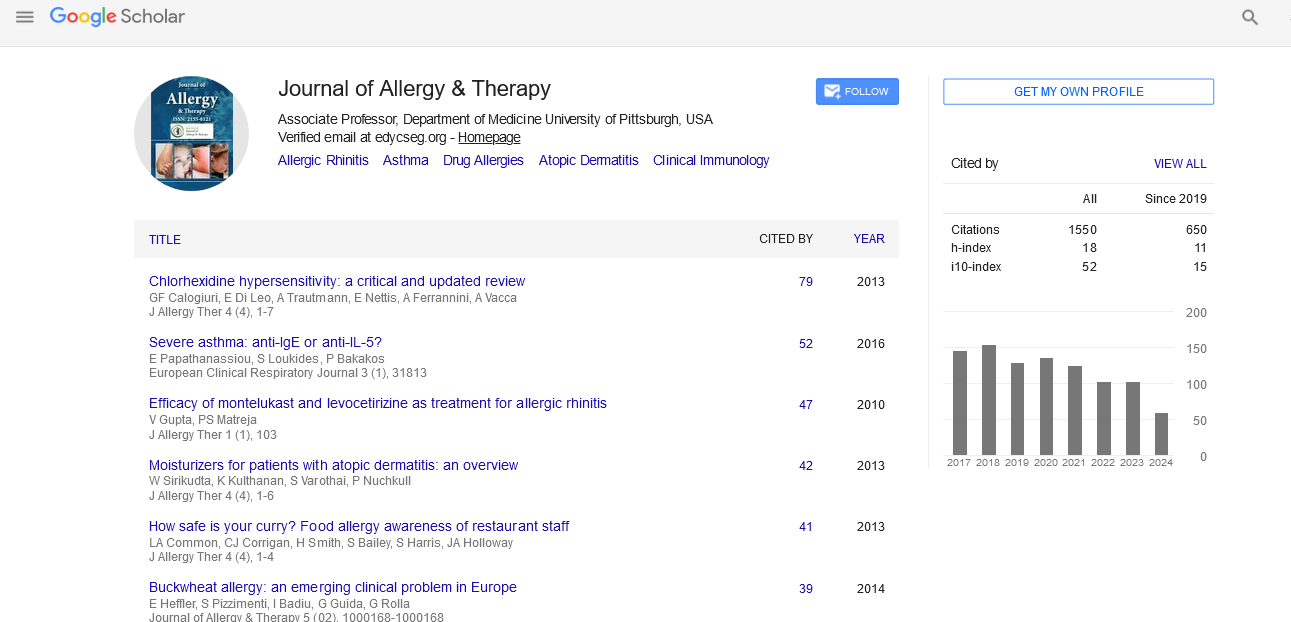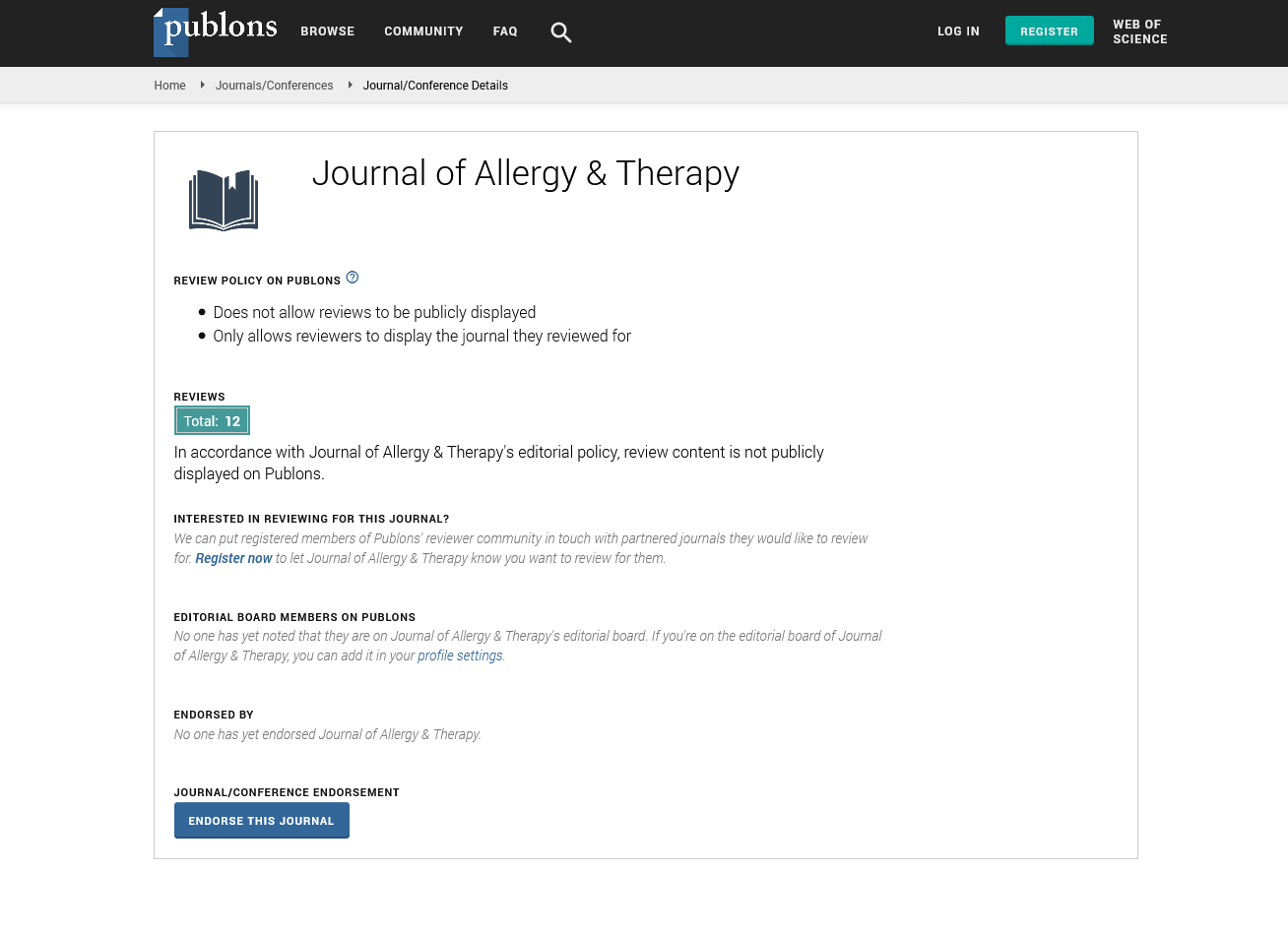Indexed In
- Academic Journals Database
- Open J Gate
- Genamics JournalSeek
- Academic Keys
- JournalTOCs
- China National Knowledge Infrastructure (CNKI)
- Ulrich's Periodicals Directory
- Electronic Journals Library
- RefSeek
- Hamdard University
- EBSCO A-Z
- OCLC- WorldCat
- SWB online catalog
- Virtual Library of Biology (vifabio)
- Publons
- Geneva Foundation for Medical Education and Research
- Euro Pub
- Google Scholar
Useful Links
Share This Page
Journal Flyer

Open Access Journals
- Agri and Aquaculture
- Biochemistry
- Bioinformatics & Systems Biology
- Business & Management
- Chemistry
- Clinical Sciences
- Engineering
- Food & Nutrition
- General Science
- Genetics & Molecular Biology
- Immunology & Microbiology
- Medical Sciences
- Neuroscience & Psychology
- Nursing & Health Care
- Pharmaceutical Sciences
Commentary - (2025) Volume 16, Issue 2
Understanding Asthma: Causes, Symptoms, Triggers, Management, and Advances in Treatment Options
Mimi Tang*Received: 30-Apr-2025, Manuscript No. JAT-25-29450; Editor assigned: 02-May-2025, Pre QC No. JAT-25-29450; Reviewed: 16-May-2025, QC No. JAT-25-29450; Revised: 23-May-2025, Manuscript No. JAT-25-29450; Published: 30-May-2025, DOI: 10.35248/2155-6121.25.16.421
Description
Asthma is a chronic respiratory disease that affects the airways in the lungs, causing them to become inflamed, narrowed and filled with mucus. This condition makes breathing difficult and can lead to coughing, wheezing, chest tightness and shortness of breath. Asthma affects people of all ages and backgrounds, with symptoms that may vary in severity from person to person. While there is currently no cure for asthma, proper management and treatment allow most individuals to lead normal, active lives.
The exact cause of asthma remains unknown, but it is widely understood to result from a combination of genetic and environmental factors. People with a family history of asthma or allergies are more likely to develop the condition. Asthma is also more common in individuals exposed to certain environmental triggers during early childhood, such as tobacco smoke, air pollution, allergens and respiratory infections. These exposures may sensitize the immune system and lead to chronic airway inflammation.
Asthma symptoms can range from mild to severe and may occur occasionally or frequently. Common symptoms include wheezing, a high-pitched whistling sound while breathing; shortness of breath; chest tightness or pain; and persistent coughing, especially at night or early in the morning. Some individuals may experience symptoms only during physical activity or when exposed to specific triggers, while others may have persistent symptoms requiring daily treatment. In severe cases, asthma attacks can occur, leading to a rapid worsening of symptoms that may require emergency medical attention.
A key aspect of understanding asthma is recognizing its triggers. These vary widely among individuals but often include allergens such as pollen, dust mites, mold spores, pet dander and cockroach droppings. Irritants like cigarette smoke, strong odors, air pollution and chemical fumes can also provoke symptoms. Respiratory infections, changes in weather or cold air, physical exertion and emotional stress are other common triggers. Identifying and avoiding personal triggers is a critical component of asthma management and can significantly reduce the frequency and severity of symptoms.
Diagnosing asthma involves a combination of clinical evaluation, medical history and pulmonary function tests. A doctor may assess the pattern and frequency of symptoms, ask about family history and use tests such as spirometry to measure how much air a person can exhale and how quickly. Bronchodilator reversibility tests, peak expiratory flow measurements and methacholine challenge tests may also be used to confirm the diagnosis and evaluate the degree of airway sensitivity. In children, diagnosis may be more challenging, especially in those too young to perform lung function tests accurately.
Effective asthma management is built on four essential pillars: assessment and monitoring, education, environmental control and pharmacologic therapy. Regular assessment of asthma control helps guide treatment decisions and ensures that the condition remains well-managed over time. Patient education is equally important and includes training on inhaler technique, recognition of worsening symptoms and the use of action plans. Asthma action plans are personalized guides that help patients respond appropriately to symptom changes and avoid severe attacks.
Environmental control focuses on minimizing exposure to known triggers. This can involve using allergen-proof bedding, regularly cleaning living spaces, using air purifiers and avoiding smoking or secondhand smoke. For exercise-induced asthma, warming up before physical activity and using pre-exercise medication can help reduce symptoms. In some cases, treating underlying allergies with antihistamines or allergy immunotherapy may also benefit asthma control.
Pharmacologic therapy for asthma is divided into two main categories: long-term control medications and quick-relief (rescue) medications. Long-term control medications, such as inhaled corticosteroids, leukotriene modifiers and long-acting beta-agonists, help reduce inflammation and prevent symptoms. These medications are typically taken daily, even when symptoms are not present. Quick-relief medications, such as short-acting beta-agonists like albuterol, are used during asthma attacks or for immediate symptom relief. Overreliance on rescue inhalers may indicate poor asthma control and the need for adjustment in long-term therapy.
In recent years, significant advances have been made in asthma treatment, especially for individuals with moderate to severe forms of the disease. Biologic therapies targeting specific components of the immune system, such as monoclonal antibodies against IgE (omalizumab) or interleukin pathways (e.g., mepolizumab, benralizumab), have been developed to treat severe eosinophilic or allergic asthma. These treatments are administered via injection and have shown to reduce exacerbations and improve quality of life in patients who do not respond well to conventional medications.
Despite these advancements, asthma continues to be a major global health issue. According to the World Health Organization, asthma affects over 260 million people worldwide and contributes to hundreds of thousands of deaths each year. Many of these deaths are preventable with proper diagnosis, education and access to treatment. In low and middle-income countries, challenges such as poor air quality, lack of awareness and limited access to healthcare resources remain barriers to effective asthma management.
Conclusion
Living with asthma requires a proactive and informed approach. Individuals must understand their condition, monitor symptoms regularly, follow prescribed treatments and maintain open communication with healthcare providers. With the right support and strategies, asthma can be well-controlled, allowing individuals to participate fully in work, school, sports and daily life. Ongoing research and innovation continue to improve our understanding of asthma and bring hope for more personalized and effective therapies in the future.
Citation: Tang M (2025) Understanding Asthma: Causes, Symptoms, Triggers, Management and Advances in Treatment Options. J Allergy Ther.16:421.
Copyright: © 2025 Tang M. This is an open-access article distributed under the terms of the Creative Commons Attribution License, which permits unrestricted use, distribution and reproduction in any medium, provided the original author and source are credited.


